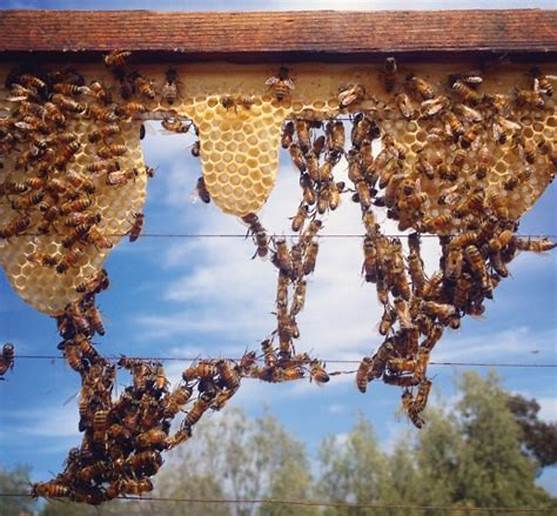If I Were Queen
September 2, 2022
Once our honeybees moved in with us, they had to quickly build all new honeycomb from scratch. As is always the case when a bee colony swarms, the queen and half the colony leave the existing hive to find a new home and start over somewhere else. Starting over means quickly building the infrastructure needed to survive, and for the honeybee, there is nothing more essential than their comb.
When female honeybees are 10-12 days old, they develop wax secreting glands on their abdomen and for the next 5 days these “builder bees” take care of all the construction and repair needs of the colony. It is a massive group effort - hundreds of individual bees take part in creating and perfecting each hexagonal cell in every comb.
Some builders work alone, chewing the wax flakes until malleable and then adding it to the comb. Others mysteriously link legs with their coworkers forming chains of bees called “festoons”. In a festoon, the wax is formed into a ball and passed up the chain from one bee to the next until it is placed on the comb.
The number of bees in a hive and therefore the amount of comb needed varies greatly depending on the health of the colony, and the time of year. 30,000 bees during the peak summer months and about that number of cells contained within 15 sections of comb seems like a fairly conservative estimate for our hive. The population changes over the course of the year, as does the utilization of all those cells.
Each cell will be reused multiple times over the course of the summer. Any given cell might be used to store honey, pollen, or to raise the colony’s brood.
By late summer most of the cells are filled with the honey needed to survive the winter. Come spring, after the honey has been consumed, those cells will be repurposed for laying eggs. Builder bees will clean out the cell, smooth the walls and add a thin layer of propolis which acts as an antibacterial buffer for the eggs. The queen will not lay an egg in any cell until this step has been completed.
Before laying, she puts her head inside the cell and measures it with her antennae. The size of the cell determines what kind of egg she lays. 90% of the cells in a hive are the correct size for workers (females) since they make up the vast majority of the colony. The drones (males) make up the remaining 10 % of the summertime population and require a bigger cell. If the builder bees determine that the colony needs more drones, a worker’s cell will be enlarged to a drone sized cell and after measuring, the queen will lay a drone egg.
If the builders determine fewer drones are needed, as is the case in late summer, a drone sized cell will be reduced to a worker sized cell and the queen will lay a female egg. The queen can lay up to 2000 eggs a day.
If the builders are not happy with the existing queen’s performance, they will build a large, elongated queen-sized cell, in which the queen will dutifully lay her own replacement.
Personally, if I were queen, I’d totally ignore the suggestion and just move on to the next cell. I mean, what’s the point of being queen if you don’t get to make the big decisions?

